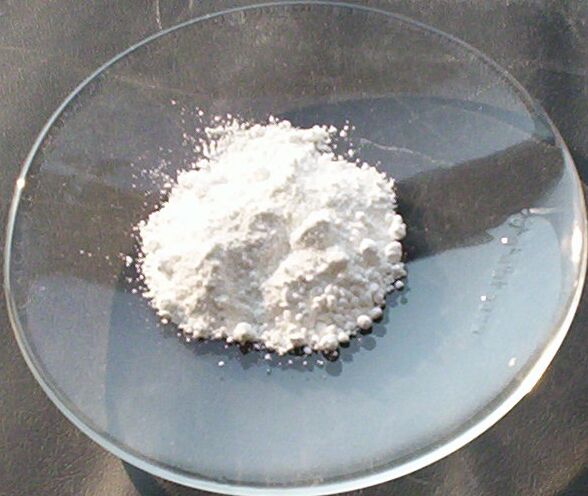Glossary
Ingredients from certified organic cultivation
Organic essential oils
Ingredients from essential oils
- All
- A
- B
- C
- D
- E
- F
- G
- H
- I
- J
- K
- L
- M
- N
- O
- P
- R
- S
- T
- V
- Z
Acetylated Glycol Stearate
Adansonia Digitata (Baobab) Seed Oil*
Alcohol
Alcohol Denat
Allantoin
Aloe barbadensis extract (Aloe Vera extract)*
Aloe barbadensis Leaf Juice*
Aluminum Tristearate
Aqua (Water)
Argania Spinosa (Argan) Kernel Oil*
Arginine
Aroma (Flavor)
Behenyl Alcohol
Benzyl Alcohol
Benzyl Benzoate
Benzyl Benzoate***
Benzyl Salicylate***
Beta-carotene
Betaine
Biotin
Bis-Ethylhexyloxyphenol Methoxyphenyl Triazine
Bisabolol
Butyl Methoxydibenzoylmethane
Butyrospermum parkii (Shea) butter*
C10-18 Triglycerides
C12-15 Alkyl Benzoate
Caffeine
Calendula officinalis flower extract
Calendula officinalis flower extract*
Camellia Sinensis (Green Tea) Leaf Extract*
Cananga Odorata (Ylang Ylang) Flower Oil**
Candelilla Cera (Euphorbia Cerifera (Candelilla) Wax)
Caprylic/ Capric Triglyceride
Caprylic/ Capric Triglyceride*
Caprylyl/Capryl Wheat Bran/ Straw Glycosides
Cellulose Gum
Cera Alba (beeswax)*
Cetearyl Alcohol
Cetearyl ethylhexanoate
Cetyl alcohol
Cetyl Esters
Cetyl Phosphate
Chamomilla Recutita (Chamomille) Flower Extract*
Chamomilla Recutita (Matricaria) Flower Extract*
Chlorella Vulgaris (Algae) Extract
Chondrus Crispus (Carrageenan) Powder
Chondrus Crispus Powder
Cinnamal
Cinnamal***
Citral
Citric acid
Citronellol
Citronellol***
Citrus Aurantium Bergamia (Bergamot) Fruit Oil
Citrus Limon (Lemon) Peel Oil**
Citrus Reticulata (Mandarin) Peel Oil**
Citrus Sinensis (Orange) Peel Oil Expressed**
Cocamidopropyl betaine
Cocamidopropyl Hydroxysultaine
Coco-Glucoside
Cocos nucifera (coconut) oil*
Cocoyl Proline
Commiphora Myrrha (Myrrh) Resin extract
Copernicia Cerifera Cera (Carnauba Wax)
Coumarin
Crithmum Maritimum Extract
Cyathea Cumingii Leaf Extract
Daucus carota sativa(carrot) root extract
Decyl Glucoside
Dehydroacetic acid
Dibutyl adipate
Dicaprylyl Carbonate
Dicaprylyl Ether
Diethylamino Hydroxybenzoyl Hexyl Benzoate
Dipalmitoylethyl Hydroxyethylmonium Methosulfate
Disodium Cocoamphodiacetate
Distearoylethyl hydroxyethylmonium methosulfate
Echinacea Angustifolia Meristem Cell Culture
Echinacea Purpurea Root Extract
Elaeis guineensis (Palm) Oil*
Erythritol
Ethyhexylglycerin
Ethylhexyl palmitate
Eugenol
Eugenol***
Fusel Wheat Bran/Straw Glycosides
Gellan Gum
Geraniol
Geraniol***
Gluconolactone
Glycerin
Glycerin*
Glyceryl Behenate
Glyceryl Caprate
Glyceryl Caprylate
Glyceryl Hydrogenated Rosinate
Glyceryl Oleate
Glyceryl Stearate
Glyceryl stearate citrate
Glyceryl Stearate SE
Glyceryl Undecylenate
Glycine Soja (Soyabean) Oil*
Glycine soya (soybean) oil
Glycyrrhiza Glabra (Licorice) Root Extract*
Helianthus Annuus (Sunflower) Seed Oil
Helianthus annuus (Sunflower) Seed oil Unsaponifiables*
Helianthus annuus (Sunflower) Seed oil*
Hibiscus Sabdariffa Flower Extract*
Hydrogenated Castor Oil*
Hydrogenated Olive Oil Cetyl Esters
Hydrogenated Starch Hydrolysate
Hydrolized Lupine Protein*
Hydrolyzed Algin
Hydrolyzed Hibiscus Esculentus Extract
Hydrolyzed rice protein
Hydrolyzed Sweet Almond Seedcake*
Hydroxyapatite
Hydroxypropyl Starch Phosphate
Hypericum Perforatum (St’ Johns Wort) Extract*
Hypericum Perforatum (St’ Johns Wort) Flower Extract*
Isoamyl Laurate
Isoeugenol***
Isopropyl Alcohol
Isopropyl isostearate
Jojoba Esters
Juglans regia (walnut) shell extract
Kaolin
Lactic Acid
Laurus Nobilis (Laurel) Leaf Oil**
Lauryl Glucoside
Lavandula angustifolia (Lavender) oil**
Lavandula hybrida (lavandin) oil*
Lecithin
Limonene
Limonene***
Linalool
Luffa cylindrica
Lysolecithin
Macadamia Ternifolia Seed Oil
Magnesium Aluminum Silicate
Magnesium Stearate
Maltooligosyl Glucoside
Malva sylvestris (Mallow) Flower extract*
Maris Aqua (Sea Water)
Medicago Sativa (Alfalfa) Extract*
Mel (honey)*
Mentha Arvensis (Mint) Leaf Oil**
Mentha piperita (peppermint) oil*
Menthyl Lactate
Microcrystalline Cellulose
Myristyl Myristate
Myrtus Communis (Myrtle) Leaf Extract*
Niacinamide
Octocrylene
Olea Europaea (Olive) fruit oil*
Olea Europaea (Olive) Leaf Extract*
Olea Europaea (Olive) Seed Powder
Oleyl Alcohol
Olivoyl hydrolyzed wheat protein
Olus (Vegetable) Oil*
Olus Oil
Opuntia Ficus-Indica (Barbary Fig) Seed Oil*
Opuntia Ficus-Indica Stem Extract
Origanum dictamnus (leaf) extract*
Origanum Dictamnus Flower/Leaf/ Stem Extract*
Origanum dictamus (dictamus) extract*
Oryza Sativa (Rice) Powder*
Panthenol
Parfum
Parfum**
Passiflora Incarnata Seed Oil
Persea Gratissima (Avocado) Oil*
Polyglyceryl-3 polyricinoleate
Polyglyceryl-3 Stearate
Polyglyceryl-5 Oleate
Pongamia Glabra (Karanja) Seed Oil*
Potassium Cetyl Phosphate
Potassium Hydroxide
Potassium Sorbate
Propanediol
Propanediol Dicaprylate
Propylene glycol
Prunus Amugdalus Dulcis (Sweet almond) oil
Prunus armeniaca (Apricot) Kernel oil*
Prunus armeniaca (apricot) seed powder*
Pullulan
Pyrus Malus (Apple) Fruit Extract*
Rhodiola Rosea Root Extract
Ricinus Communis (Castor) Seed Oil*
Rosmarinus Officinalis (Rosemary) Leaf Extract*
Ruscus Aculeatus Root Extract*
Saccharomyces Cerevisiae Extract
Salvia Officinalis (Sage) Flower/Leaf/ Stem Water*
Satureja Montana (Winder Savory) Oil**
Sclerotium Gum
Sesamum Indicum (Sesame) Oil Unsaponifiables*
Sesamum Indicum(Sesame) Seed Oil*
Simmondsia Chinensis (Jojoba) Seed oil
Sodium Anisate
Sodium Benzoate
Sodium Chloride
Sodium Chloride (natural pH balanced)
Sodium Citrate
Sodium Coco-Glucoside Tartrate
Sodium Cocoyl Isethionate
Sodium Gluconate
Sodium Hyaluronate
Sodium Hydroxide
Sodium lauroamphoacetate
Sodium lauroyl glutamate
Sodium lauroyl sarcosinate
Sodium Lauryl Sulfoacetate
Sodium Levulinate
Sodium Olivate
Sodium Phytate
Sodium stearoyl lactylate
Sodium Surfactin
Sorbitan Sesquioleate
Sorbitan Stearate
Spilanthes Acmella Flower Extract
Stearic Acid
Sucrose Laurate
Sucrose Polysoyate
Sucrose Stearate
Tetrasodium Glutamate Diacetate
Theobroma Cacao (Cocoa) Seed Butter*
Theobroma cacao butter (cacao butter)*
Tilia Cordata (Linden) Flower Extract*
Titanium dioxide
Tocopherol
Vitis vinifera (Grape) Fruit Extract*
Vp/Eicosene Copolymer
Xanthan Gum






